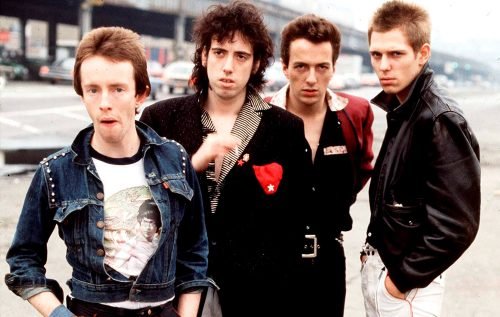In the pantheon of punk rock, few bands have resonated as profoundly with the spirit of rebellion and the clamor for change as The Clash. Formed in 1976, in the heart of London, The Clash emerged from the furnace of societal unrest with a mission to not only rock the music world but also to challenge the status quo.
With their explosive blend of rock, reggae, and ska, Joe Strummer, Mick Jones, Paul Simonon, and Topper Headon didn’t just play music—they delivered messages, loud, clear, and unapologetically political. Their albums, from the iconic London Calling to the experimental Sandinista!, were more than just collections of songs; they were manifestos, heralding a new era of music that was both an art form and a movement.
Delve deep into the heart of The Clash, exploring the internal tensions that contributed to their unexpected and tumultuous breakup. Despite their shared commitment to music and political activism, creative differences, personal struggles, and ideological splits began to surface within the band. By examining these conflicts, we will shed light on how such a tight-knit group could disband at the height of their powers and influence. Understanding The Clash’s breakup provides not only a window into the complexities of band dynamics but also reflects the challenges faced by revolutionary movements within music circles. Through this exploration, we aim to appreciate more deeply the legacy of The Clash and the indelible mark they left on music and culture.
The Rise of The Clash
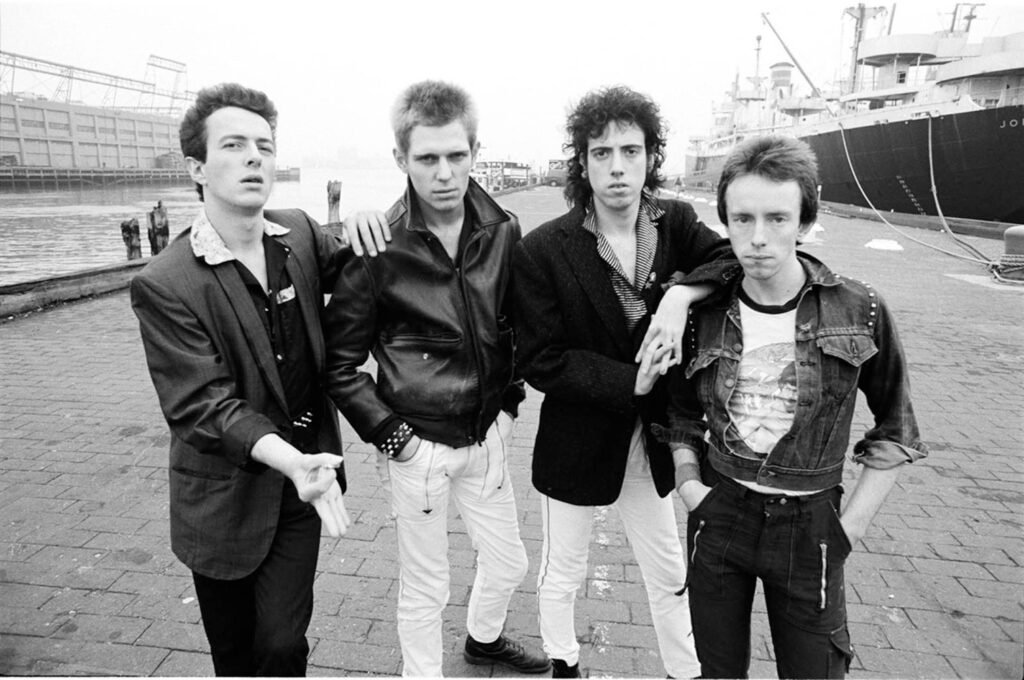
The Clash was born out of the tumultuous backdrop of 1970s London, a city simmering with socio-economic discontent and cultural upheaval. The band’s formation was an act of serendipity mixed with deliberate intent, as each member brought not only their unique musical talents but also their personal convictions and influences. Joe Strummer, the band’s charismatic frontman, brought his gritty vocals and fervent political awareness.
Mick Jones, with his knack for melody and keen pop sensibilities, contrasted and complemented Strummer’s raw energy. Paul Simonon, who suggested the band’s name reflecting the constant, violent clashes in society, provided the throbbing bass lines and an intrinsic understanding of reggae. Topper Headon, joining the band later, added his versatile and dynamic drumming, completing the classic lineup.
Their early music, marked by its raw energy and defiant lyrics, struck a chord with a generation of youth feeling disenfranchised by a declining economic system and increasing unemployment. Albums like their self-titled debut and the follow-up, Give ‘Em Enough Rope, showcased a band that was as comfortable expressing anger and frustration as they were in experimenting with new sounds. Their early success was not just a testament to their musical abilities but also an indication of the band’s ability to resonate with the zeitgeist of their era.
Political and Social Influence
From the outset, The Clash were distinguished by their deeply ingrained political and social stances, which were reflected in their music. Unlike many of their punk contemporaries, The Clash’s approach to music was to use it as a platform for serious engagement with the issues of the day. Songs like “White Riot” and “London’s Burning” addressed racial conflicts and urban decay, while “Career Opportunities” spoke to the disillusionment of the working class with the lack of meaningful employment.
This commitment to political themes was more than just lyrical; it influenced the very way the band operated, from their decisions on where to tour, to the causes they supported, and the way they interacted with their fans. Their seminal album, London Calling, is often cited as a turning point in rock music, merging a wide array of musical styles to speak on topics from war and politics to social justice, thereby setting a precedent for future musicians regarding the potential scope and impact of punk rock.
The political and social convictions of The Clash did more than just define their music; they set the stage for the internal dynamics that would both drive and eventually help to unravel the band. As they grew in fame and influence, the pressures and challenges of staying true to their ideals in the face of commercial success began to emerge, foreshadowing the internal tensions that would later become significant. The very principles that united them also sowed the seeds of discord, as the complexities of navigating their roles as artists and activists in a rapidly changing world became increasingly fraught.
Creative Dynamics and Differences
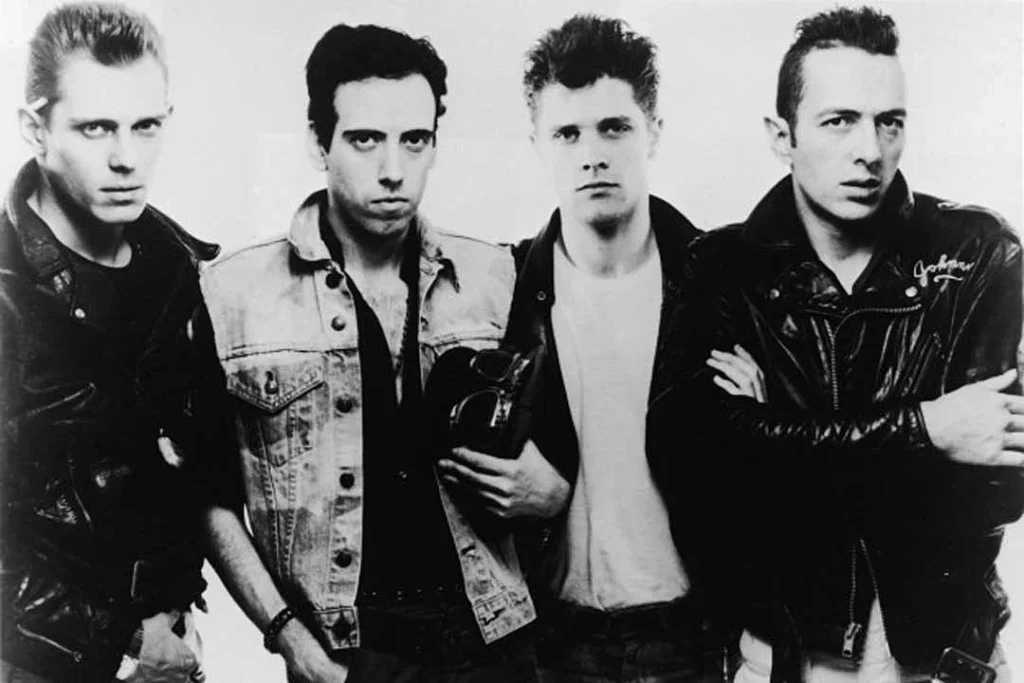
The Clash’s musical journey was marked by a restless evolution, as they continually pushed the boundaries of what punk could encompass. Their early music was characterized by its raw, explosive punk energy—a sound that captured the spirit of a disenfranchised youth. However, The Clash were never content to remain within the confines of traditional punk; they were pioneers in incorporating a diverse range of musical styles, including reggae, rockabilly, dub, and even jazz into their repertoire.
This evolution began to manifest prominently with their groundbreaking album, London Calling. Released in 1979, this album saw The Clash blending rock and roll, ska, reggae, and R&B, which not only expanded their musical landscape but also broadened their appeal. The shift continued with Sandinista! in 1980, a triple album that included an even wider array of styles such as gospel, funk, and hip hop.
While this eclecticism won them critical acclaim and a dedicated following, it also began to create rifts within the band. The divergence in musical tastes and the intensity of the creative processes required to produce such varied music led to significant tensions, particularly between Strummer and Jones, who each had distinct visions for the band’s direction.
Key Albums and Songs
London Calling is often celebrated as a pinnacle of The Clash’s career, balancing punk’s raw edge with an experimental approach to other genres. Songs like “Train in Vain” and the titular “London Calling” not only showcase this blend but also highlight the band’s ability to address personal and social anxieties in a globally relatable way. However, it was perhaps Sandinista! that tested the band’s internal cohesion the most. Its sprawling nature and eclectic sounds were a source of contention, particularly as the band members debated the commercial viability and artistic value of such an ambitious project.
Another notable point of contention arose with the release of Combat Rock in 1982. This album included hits like “Should I Stay or Should I Go” and “Rock the Casbah,” which propelled the band to new heights of commercial success. However, these songs also signaled a shift towards a more mainstream appeal, which stirred internal debates about compromising on their punk ethos. Mick Jones, who was leaning more towards experimental and new wave influences, found himself increasingly at odds with Strummer’s vision of maintaining the band’s politically charged, straightforward punk identity.
Political Disagreements and Ideological Splits
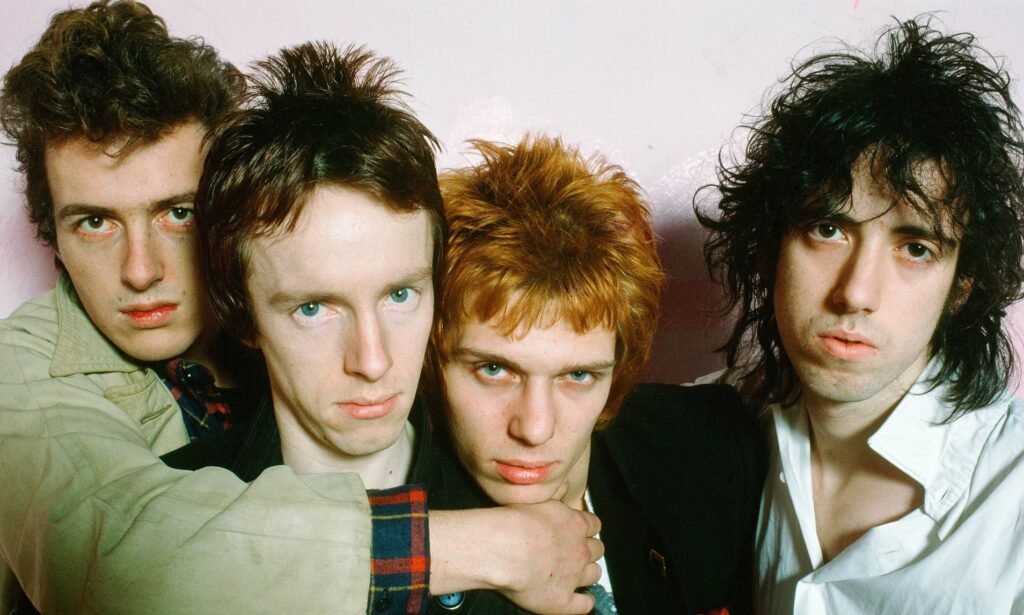
The Clash were renowned for their strong political messages, but as individuals, the band members held nuanced and sometimes conflicting views that would eventually influence their dynamics. Joe Strummer, the primary lyricist, was deeply influenced by leftist ideologies, advocating for social justice and anti-imperialism, themes that permeated much of the band’s lyrics. Mick Jones, while also leaning left, was more focused on the band’s musical evolution and less overtly political in his approach, which sometimes led to disagreements over the direction and message of their music.
Paul Simonon’s politics were more grounded in anti-establishment and anti-authoritarian sentiments, which aligned with punk’s broader ethos but were less ideologically rigid than Strummer’s. Topper Headon, the drummer, was less vocal about his political beliefs, primarily focusing on the musical aspects of the band, though he participated fully in their politically charged projects.
These varied perspectives contributed to a rich tapestry of ideas within The Clash, but they also sowed the seeds of ideological splits. Strummer and Simonon often pushed for the band to make political statements, while Jones was occasionally resistant, concerned that overt political messaging might overshadow the music itself. These differences were reflective not only in their music but also in how they engaged with each other and with their audience.
Impact on Music and Public Image
The Clash’s political stances were integral to their identity, shaping both their music and their public image. Albums like Sandinista! and London Calling are replete with tracks that speak to social injustices, war, and oppression, resonating with a wide audience that was politically and socially conscious. Their decision to play Rock Against Racism, and their outspoken support for various causes, cemented their position as more than just musicians; they were also activists.
However, these political commitments came with their complications. As the band grew in popularity, the expectations to maintain a consistent political stance became a source of pressure. Strummer, in particular, felt a deep responsibility to their fan base to continue delivering powerful political messages, a sentiment that was not always fully shared by Jones, who sometimes saw it as a limiting factor in their musical exploration and commercial success.
The band’s public image as political pioneers was also a double-edged sword. It garnered them a dedicated following who admired their commitment to social change but also attracted criticism from those who felt they were capitalizing on political movements for personal gain or questioned the authenticity of their messages given their success. These external criticisms exacerbated the internal disagreements, as each member had to reconcile their personal beliefs with the public persona of the band.
Personal Struggles Within the Band
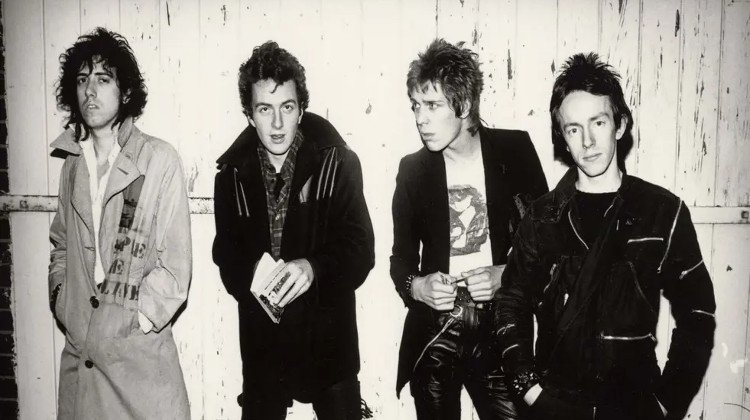
The interpersonal dynamics within The Clash were as complex and charged as their music. While the members shared a common goal of using their platform to effect change, their relationships were often strained by differing creative visions and personalities. Joe Strummer and Mick Jones, the core songwriting duo, initially shared a close bond and mutual respect that was instrumental in the band’s early success. However, as the band’s direction evolved, their relationship became fraught with tension. Strummer’s insistence on maintaining the band’s political integrity often clashed with Jones’s desire to explore new musical territories and perhaps achieve greater commercial success.
Paul Simonon and Topper Headon provided a balancing force but were not without their own struggles. Simonon, whose iconic smashing of his bass guitar on the cover of London Calling symbolized the band’s rebellious spirit, often found himself mediating between Strummer and Jones. Headon, despite his quieter role in political discussions, faced significant personal challenges, particularly with drug addiction, which affected his performance and reliability, eventually leading to his departure from the band in 1982.
The interplay of these strong personalities and differing motivations created a volatile environment that was simultaneously creative and destructive. As tensions mounted, the ability to collaborate effectively became increasingly compromised, leading to periods of intense conflict that were only partially resolved by their shared commitment to the band’s success.
External Pressures
The external pressures of fame, media scrutiny, and the music industry’s expectations exacerbated the internal conflicts within The Clash. As punk rock’s poster boys, they were constantly under the microscope, and their every move was analyzed and critiqued not just by their fans but also by critics and the media. This intense public and industry scrutiny often put the band members under enormous stress, magnifying their personal and creative differences.
The music industry, with its relentless focus on commercial success, posed particular challenges. The Clash were signed to CBS Records, a major label whose commercial expectations sometimes clashed with the band’s artistic and political ambitions. The push and pull between commercial success and artistic integrity were a constant source of tension, particularly affecting Jones and Strummer, who had differing views on how to balance these aspects.
Additionally, the band’s rapid ascent to fame brought with it the typical trappings of celebrity—money, influence, and access—which were at odds with their punk ethos. This dichotomy sometimes led to feelings of hypocrisy and guilt, particularly for Strummer, who prided himself on his socialist ideals. The lifestyle changes that fame brought could isolate band members from each other and from their roots, leading to further feelings of disconnection and discord.
The Breakup
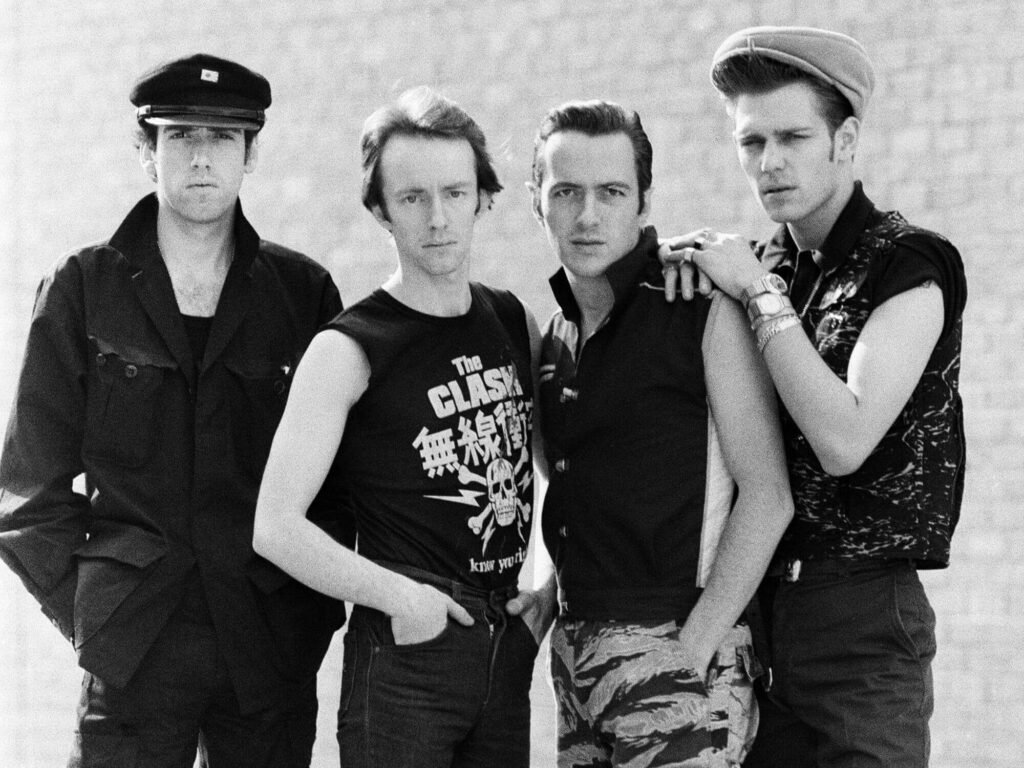
The Clash’s journey towards dissolution was marked by a series of events that highlighted the growing rifts within the band. One pivotal moment came during the tumultuous recording sessions for their fifth album, Combat Rock. These sessions were fraught with disagreement, particularly between Joe Strummer and Mick Jones. Strummer’s insistence on a direct, politically charged approach clashed with Jones’s growing interest in experimental sounds and more mainstream success, leading to heated arguments and strained relations.
The internal tensions were further exacerbated by Topper Headon’s departure in 1982 due to his struggles with drug addiction. His leaving marked a significant loss for the band, as Headon was often seen as the musical backbone of The Clash. His replacement by Terry Chimes, though competent, did not have the same creative synergy with the band, and this change was felt both in the studio and during live performances.
As the Combat Rock tour progressed, the atmosphere within the band grew increasingly toxic. Arguments were frequent, and the camaraderie that had once been a hallmark of The Clash began to disintegrate. The stress of constant touring, coupled with unresolved personal grievances, created a volatile environment.
Official Statements and Reactions
The actual breakup of The Clash was not marked by a dramatic single event but rather by a slow, almost inevitable progression. The first public acknowledgment came in 1983 when Mick Jones was fired from the band. The announcement shocked fans and the music world alike, as Jones was a founding member and key contributor to the band’s sound and success. The official statement cited the typical “differences in creative visions” as the reason, but it was clear to those following the band closely that personal conflicts had played a significant role.
Joe Strummer and Paul Simonon attempted to continue The Clash with new members, but the band never recaptured its original spirit or success. The Clash officially disbanded in 1986, with a rather quiet announcement that went almost unnoticed compared to the explosive heights of their career. The reaction from fans was one of disappointment and nostalgia, as many lamented the loss of a band that had once been a powerful voice for political and social issues.
Band members themselves had mixed reactions to the breakup. Mick Jones went on to form Big Audio Dynamite, an alternative rock band that allowed him to explore new musical landscapes. Strummer, after a period of reflection, pursued solo projects that continued to reflect his commitment to social and political themes. Both, in later interviews, expressed regret about how things ended, acknowledging that external pressures and personal issues had overshadowed their original purpose.
Post-Breakup
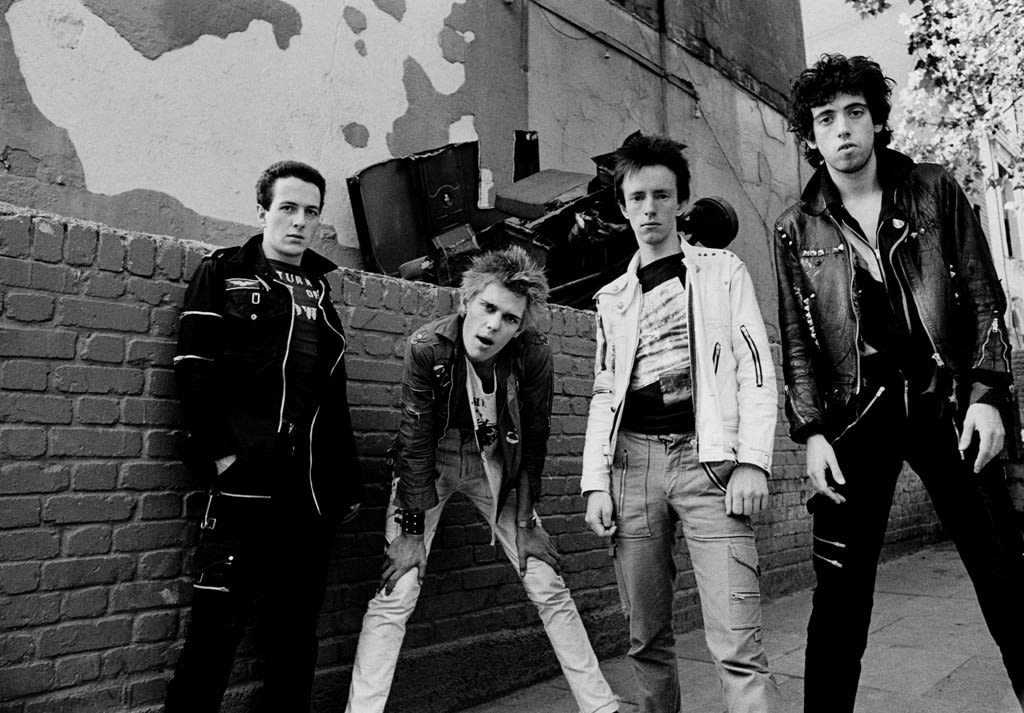
After The Clash officially disbanded, each member pursued individual projects that reflected their personal artistic inclinations, which had been points of tension during their time together. Mick Jones, whose interest in blending various musical styles was evident towards the end of The Clash’s career, formed Big Audio Dynamite. This group was notable for its innovative use of sampling and dance beats, showcasing Jones’s ongoing commitment to musical experimentation and evolution, perhaps fulfilling the creative pursuits he felt were constrained within The Clash.
Joe Strummer, on the other hand, explored various musical projects before releasing solo albums that continued to feature his signature blend of rock, folk, and reggae, infused with political passion. His work remained true to the ethos that defined his time with The Clash, emphasizing social and political themes. Strummer’s solo career seemed to serve as a platform for him to reclaim some of the raw, unfiltered political discourse that had characterized the early days of The Clash.
Paul Simonon took a somewhat different path, stepping away from music temporarily to focus on his passion for art, his original career intention before joining The Clash. He later returned to music, playing with various groups and collaborating on projects such as the supergroup The Good, The Bad & The Queen, alongside Damon Albarn of Blur. His music continued to reflect his distinctive style, though less politically charged compared to his work with The Clash.
Topper Headon released a solo album and worked on various musical projects but struggled with personal issues, including his ongoing battle with drug addiction, which had precipitated his departure from The Clash. His post-Clash career was the most turbulent, marked by legal and health problems that unfortunately overshadowed his musical contributions.
Legacy and Reunions
The Clash’s legacy is vast and enduring, influencing countless bands and artists across multiple genres. They are often cited not just as pioneers of punk but as innovators who demonstrated how music could embrace a variety of styles and cultural influences while delivering compelling political and social messages. Their induction into the Rock and Roll Hall of Fame in 2003 served as a testament to their lasting impact on the music industry.
Although the band never reunited in the full form following their breakup, there were brief collaborations between the members. Strummer and Jones notably reunited for several performances before Strummer’s untimely death in 2002. These rare appearances were highly cherished by fans, serving as poignant reminders of what the band had once been and what they had meant to their audience.
Their music continues to inspire and resonate, a lasting legacy to their innovative spirit and the deep cultural impact they made. Despite the personal and creative tensions that ultimately led to their dissolution, The Clash’s contribution to music and culture remains undeniable, illustrating the profound power of music as a force for cultural expression and social change.
